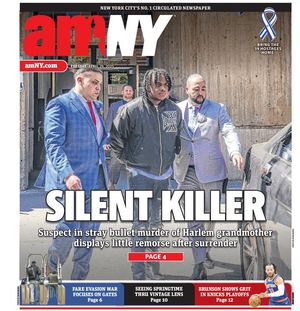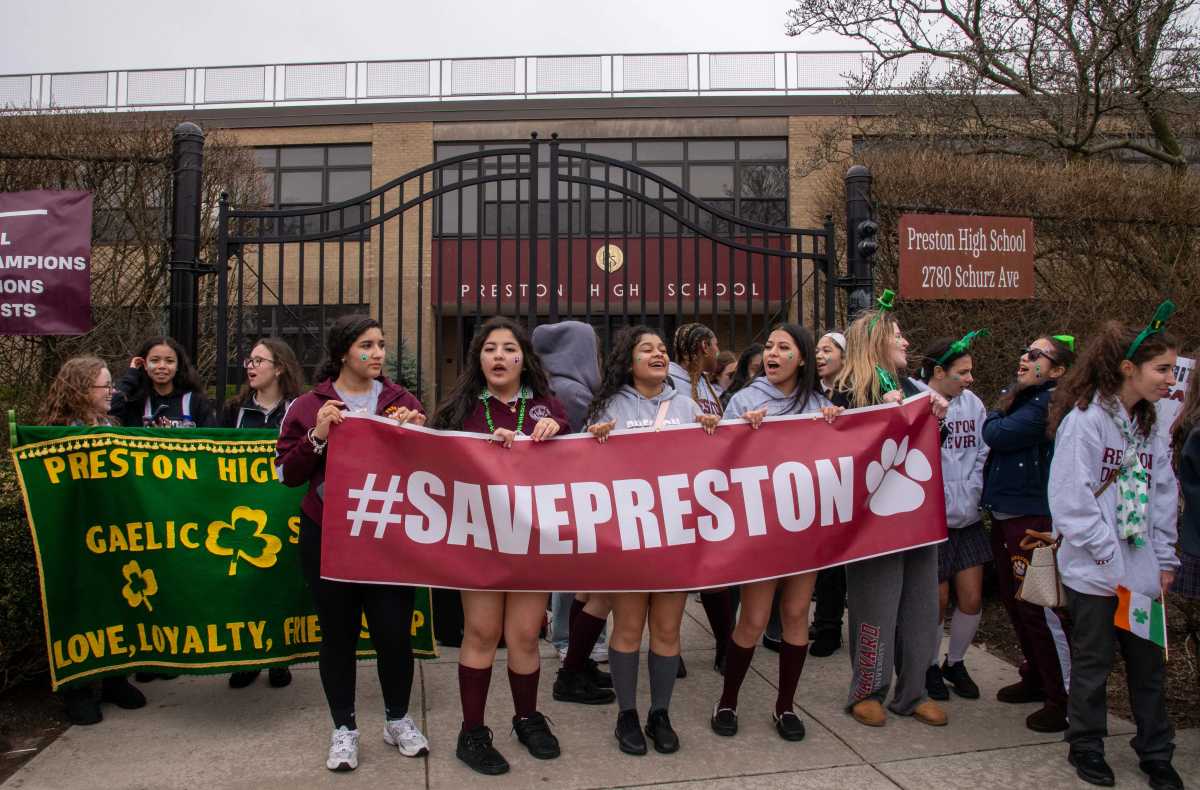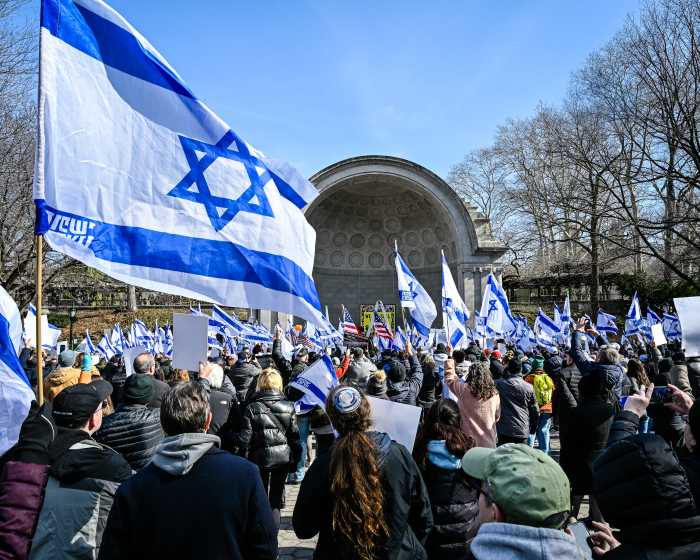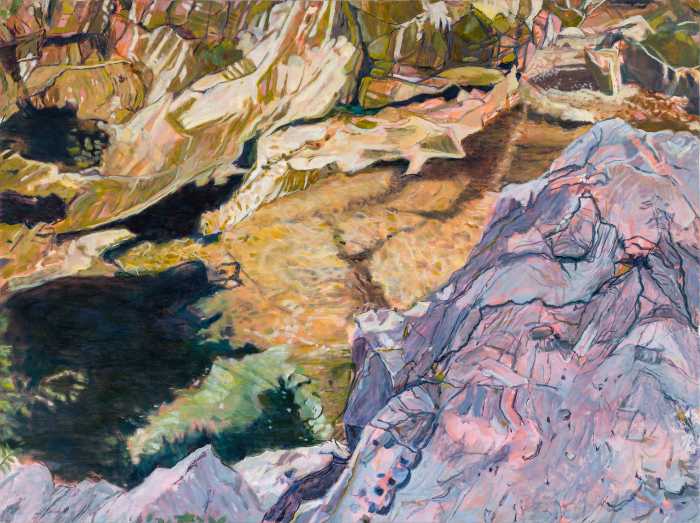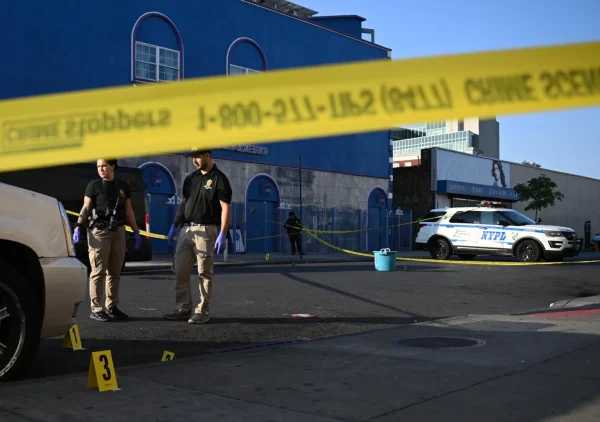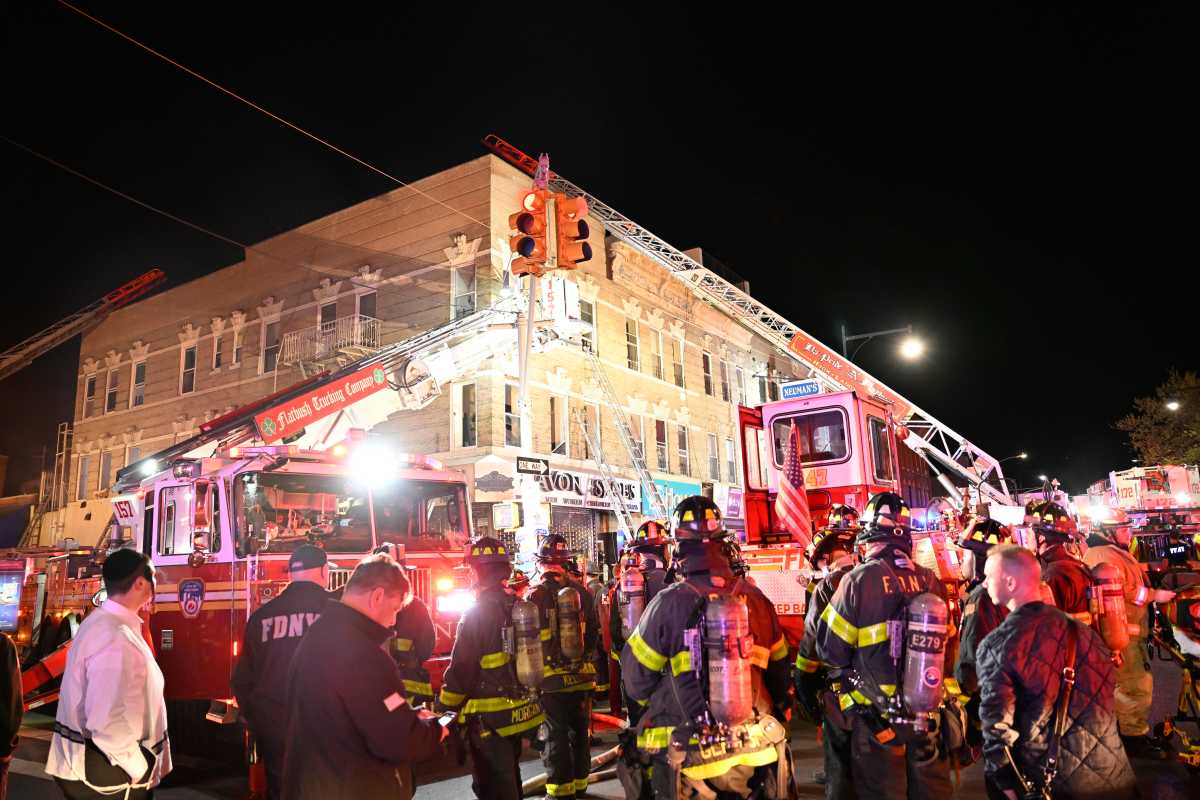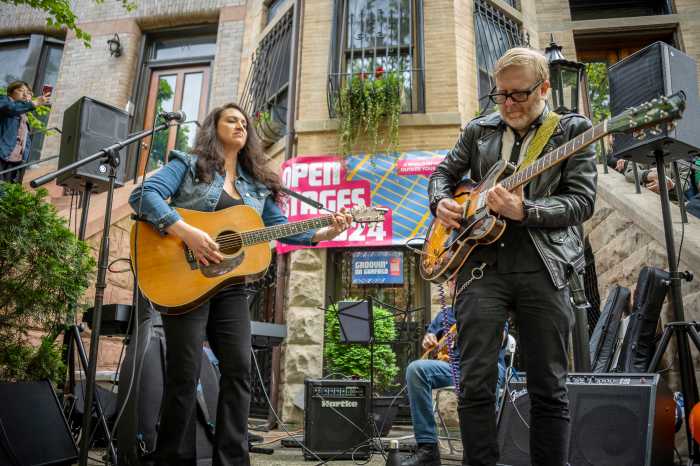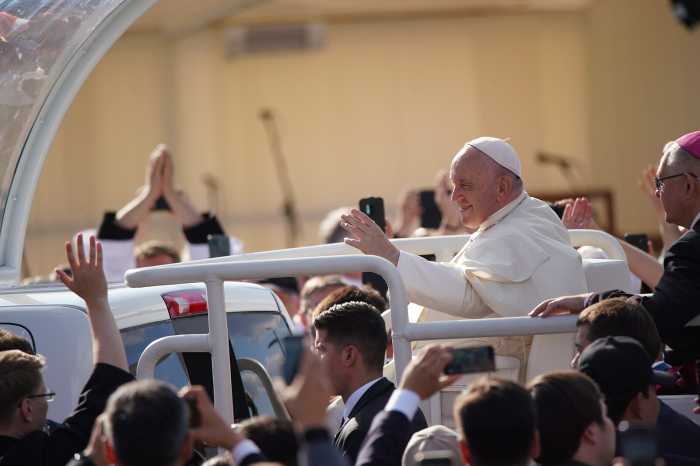BY LINCOLN ANDERSON | The Hudson River Park Trust is starting the design process for Gansevoort Peninsula — and a large multi-use sports field is an option being proposed by local youth baseball and soccer leagues.
The pitch for a 2-acre playing field was made at a meeting of the Hudson River Park Advisory Council earlier this month.
Isaac-Daniel Astrachan, vice president of the Downtown United Soccer Club, made the presentation.
“It would be a full-size field for a myriad of athletics,” Astrachan said, “football, softball, soccer, lacrosse. …”
The field could also even sport a bubble in cold weather, he added.
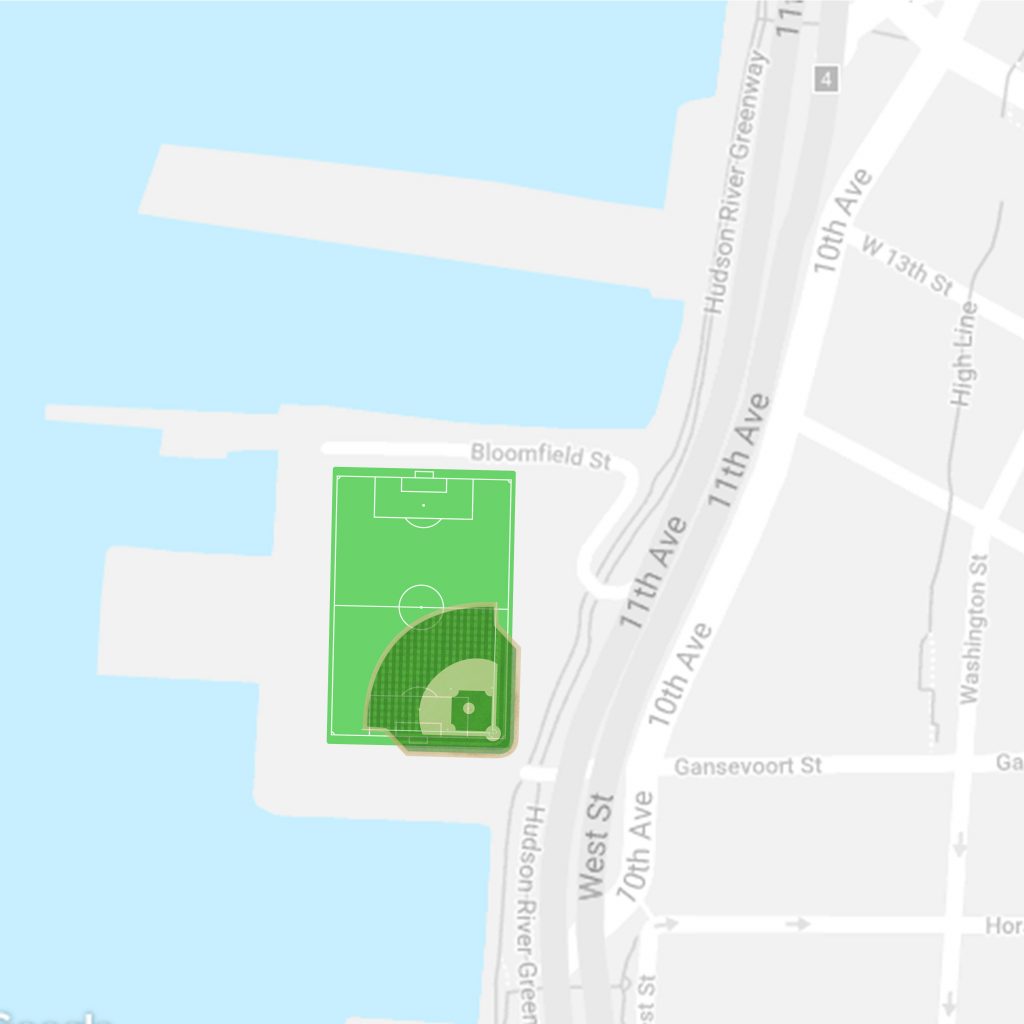
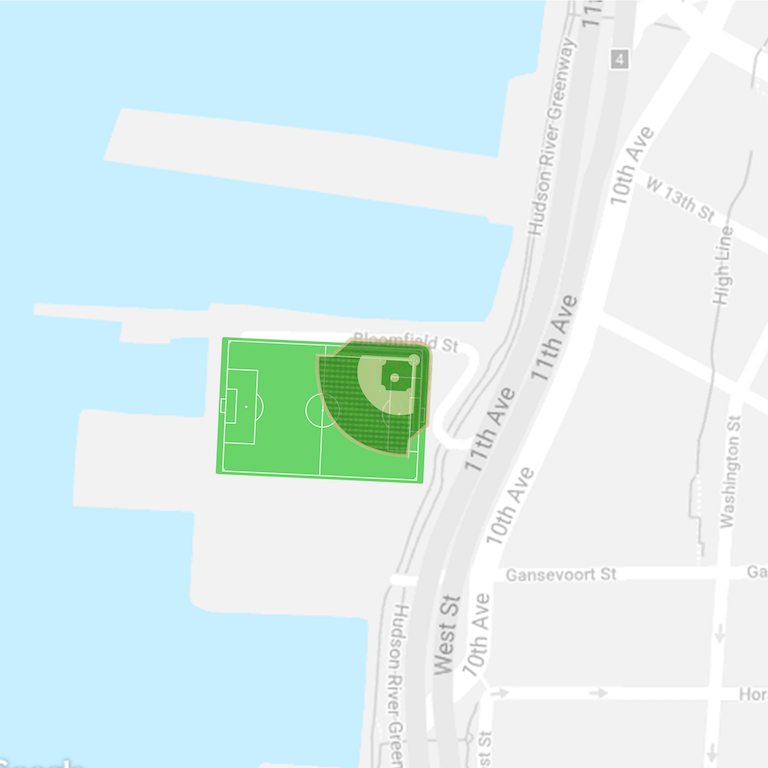
The leagues – who are collectively known as the Champions — have started a petition to push for a field on Gansevoort.
Astrachan said that, in general, the youth leagues need more playing space. For example, the fields at Pier 40, at W. Houston, “are not in good shape,” he said. There are also concerns that parts of Pier 40 could be shut down during the pier’s ongoing repairs. Meanwhile, Roosevelt Island’s sports fields are closed, and the DeWitt Clinton pitch will be closing, he added. And East River Park’s baseball and soccer fields also would go offline if the city forges ahead with its hotly disputed plan to raise that park’s height to protect it from flooding and storm surges.
The Trust recently awarded a contract for more than $5.3 million to James Corner Field Operations to design a park on Gansevoort as part of the 5-mile-long Hudson River Park.
Noreen Doyle, a Trust senior vice president, told the Advisory Council meeting that, although a designer was recently picked for the peninsula, “We’re not talking programming uses yet.”
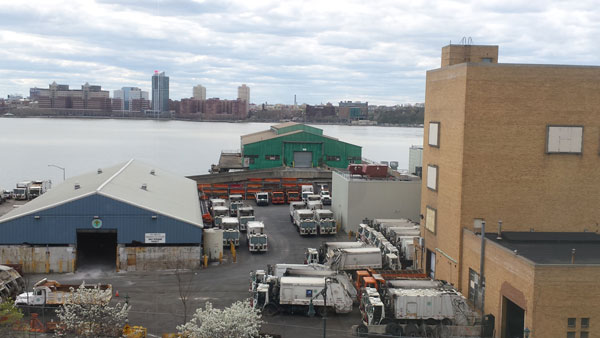
The 5-acre peninsula, located two blocks south of 14th St. on the edge of the Meatpacking District, was formerly home to a Department of Sanitation garage for several districts’ garbage trucks. Before that, it sported the ominous-sounding Gansevoort Destructor, a massive incinerator for municipal waste. Going even farther back, for nearly 70 years until 1954, it was the West Washington Market, the city’s major meat, poultry and dairy market, in the days before modern refrigerated supermarkets.
Gansevoort Peninsula is a remaining parcel of landfill from when the Lower West Side shoreline was extended out to a 13th Ave. Much of that landfill was later removed, however, because ships’ sizes had gotten so large they needed more docking space.
Under Mayor Mike Bloomberg, the city pushed the state Legislature to approve a plan for a marine waste-transfer station at Gansevoort — basically, a facility to barge recyclable trash from Manhattan to recycling sites, thereby reducing the number of garbage trucks plying the city’s streets.
To this day, however, a key memorandum of understanding, or M.O.U., that is required between the city and state to allow the project to go forward has not been signed. Basically, because part of Hudson River Park would need to be “alienated” — or removed — from public park use for the transfer station, it was agreed that the Trust should be compensated for the loss. The figure cited was $50 million. But the state has balked at being asked to pay half this cost, since the transfer station would be a city facility.
The waste-transfer plan had called for a perimeter road on the peninsula’s northern and western edges that up to 60 garbage trucks per day would rumble over to access the transfer station, where they would then dump their loads into the waiting barges.
According to local political sources, though, there still has been no movement on the M.W.T.S. plan.
Asked by this paper where things stand with that project, Madelyn Wils, the Trust’s president and C.E.O., said the Gansevoort park design plans will just have to take into account the potential for a marine waste-transfer station perhaps materializing there someday.
“We’ll build around it,” she said.
On Tues., March 26, the Trust is hosting a public design charrette for Gansevoort Peninsula, billed as a “community input workshop,” at M.S. 297, at 75 Morton St., starting at 6:45 p.m.
In a statement, a Trust spokesperson said, “We appreciate the input we’ve received for the Gansevoort Peninsula project so far and look forward to hearing more in our upcoming feedback sessions. These meetings are designed to provide a forum for community members and the general public to share thoughts and ideas for the project, and we encourage everyone to participate. Once we hear from the public, the Trust will work with our designers and engineers on a feasible concept design based on the feedback we received.”
